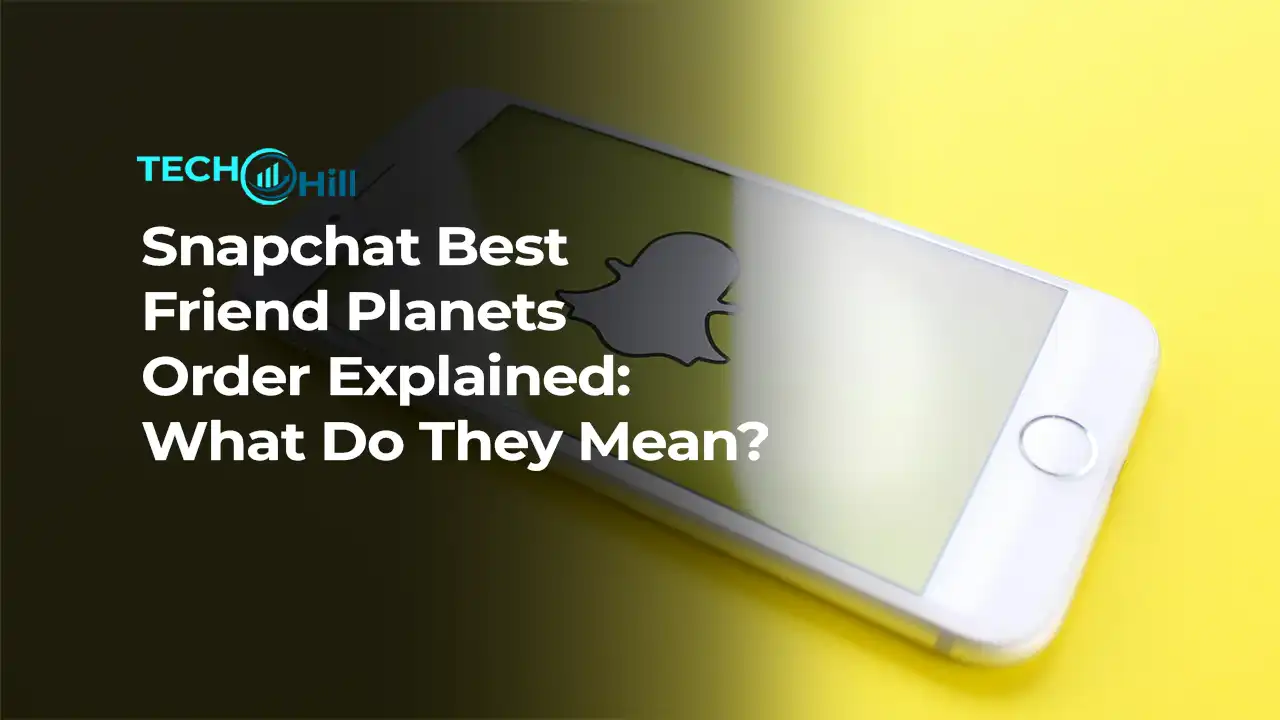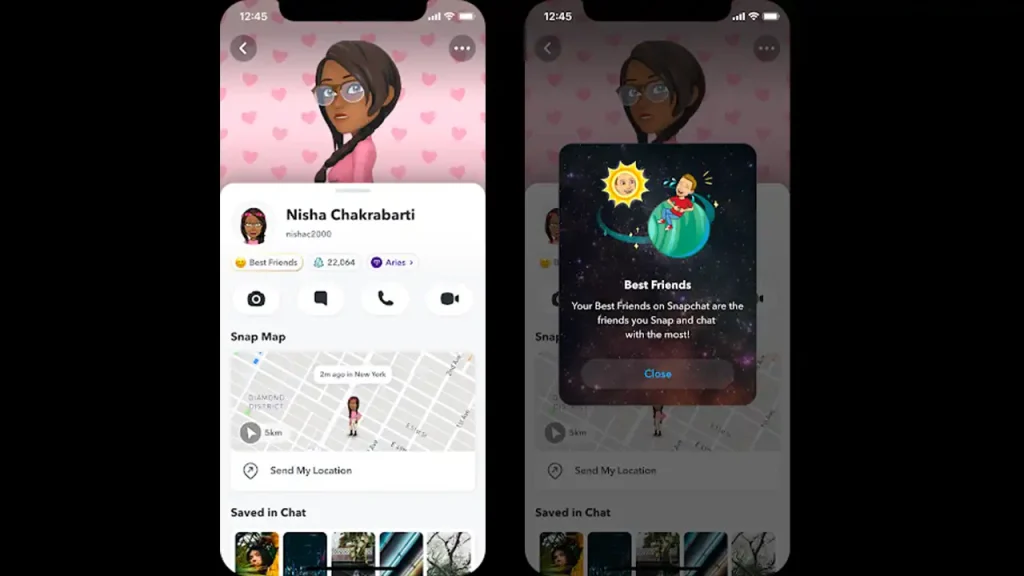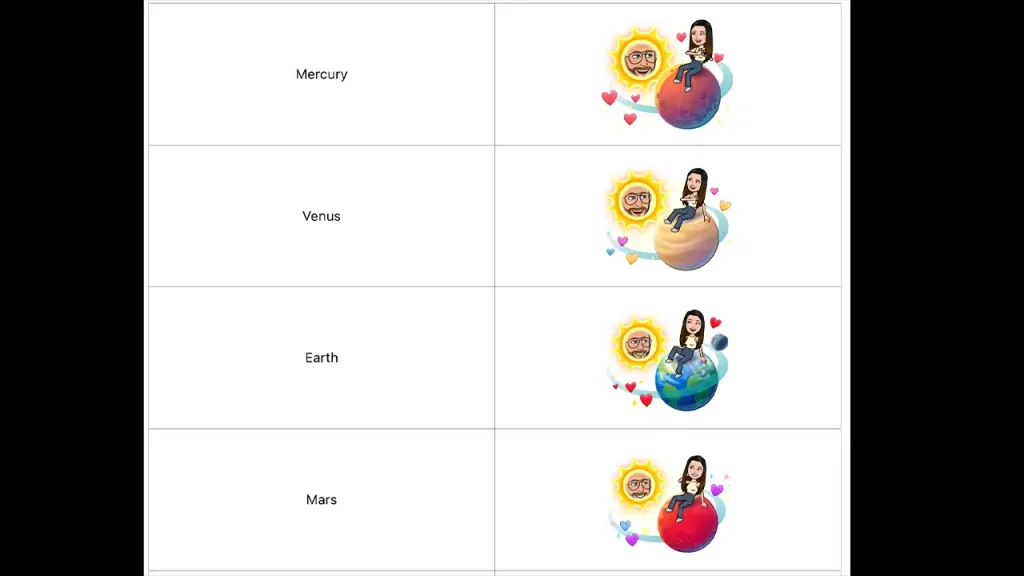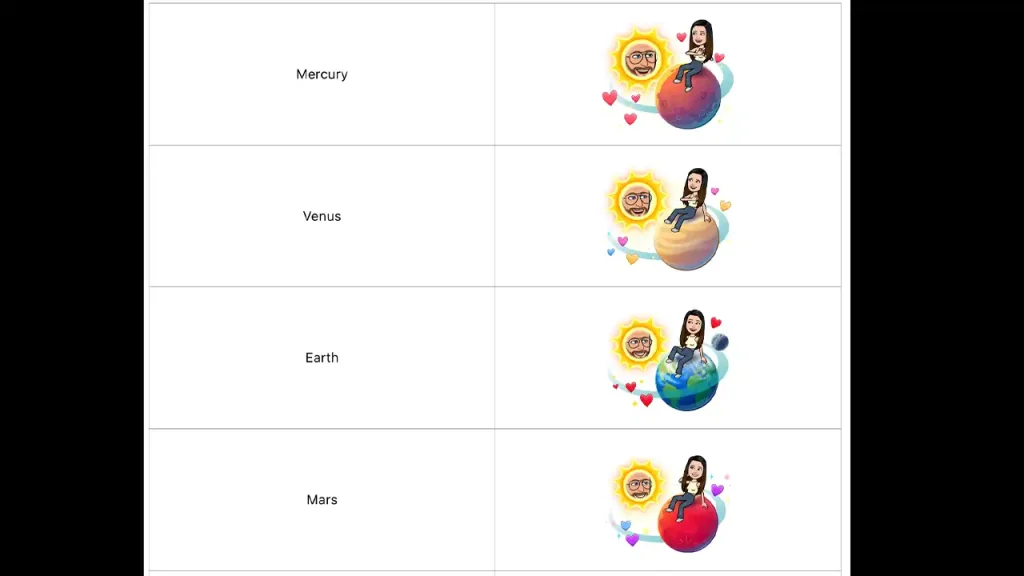Snapchat Best Friend Planets Order Explained: What Do They Mean?

Snapchat is a world filled with quirky features that keep users hooked. One of these is the Snapchat Planets feature, which adds a fun twist to understanding friendships on the app. But what exactly does this feature mean? If you’ve come across terms like “Snapchat Friend Solar System” or wondered why planets are being used to represent friendships, you’re in the right place. Let’s dive into what Snapchat planets mean, how they work, and why they’re important.
What Do the Planets Mean on Snapchat?
In the context of Snapchat, the planets represent where a user ranks in someone else’s best friends list. This unique feature is based on the popular Solar System theme, where your friendship is symbolized by a planet. The closer you are to the “Sun,” the stronger the bond. Essentially, each planet indicates how close a friend is to you on Snapchat.
Snapchat continues to evolve and create features that make connecting with friends more fun. But understanding the significance of these planets can be tricky if you don’t know what they stand for. Let’s break down what each planet represents.
What is the Snapchat Friend Solar System?
The Snapchat Friend Solar System is a feature within Snapchat Plus, a subscription service that offers additional perks to regular users. It allows users to see how close they are to a friend in their list based on a planetary order. This solar system metaphor ranks your friendships by representing each one as a planet orbiting the “Sun.”

If you’re someone’s top friend, you might be represented as Mercury, the closest planet to the Sun. If you’re a distant friend, you could be represented as Neptune. Snapchat’s Friend Solar System creatively leverages our fascination with space to create a visual and fun way to rank friends.
The Snapchat Friendship Solar System Explained
Snapchat’s Friendship Solar System uses planets to categorize friendships, but how does it all work? The order of planets mirrors the real solar system. Here’s a quick rundown:
- Mercury: The closest friend (you’re number one).
- Venus: The second closest friend.
- Earth: The third closest friend.
- Mars: The fourth closest friend.
- Jupiter: The fifth closest friend.
- Saturn: The sixth closest friend.
- Uranus: The seventh closest friend.
- Neptune: The eighth closest friend.


If you’re someone’s top friend on Snapchat, your Bitmoji will be positioned near the Sun as Mercury. As the friendship level decreases, your Bitmoji moves further away through the other planets.
How Does the Snapchat Planets Order Work?
Snapchat uses the Solar System analogy to rank friends based on interactions. It’s not just about the number of snaps but also considers other engagement factors like chats, stories, and streaks. For users with Snapchat Plus, this ranking is visible as a solar system of planets, making it easier to see who they’re most connected with on the platform.
Your placement in the Snapchat Planets Order depends on how frequently you interact with a particular friend. The more you interact, the closer you’ll be to the Sun in their Solar System. Essentially, Snapchat is visualizing the friendship hierarchy by placing friends on planets.
For example, if you’re consistently snapping and chatting with a friend, they’ll likely be your “Mercury” or “Venus.” On the other hand, friends you interact with less frequently will be placed further down the order as planets like Uranus or Neptune.
Why Is the Snapchat Planets Order Important?
Understanding the Snapchat Planets Order can add a new layer of fun to your social interactions on the app. This feature isn’t just about bragging rights, it also offers insights into how Snapchat perceives your relationships.
Here’s why the Snapchat Planets Order matters:
- Strengthening Bonds: The order can help you see who your closest friends are based on mutual engagement.
- Social Insight: It provides insight into your social habits and who you’re most connected to.
- Snapchat Plus Perks: This feature is exclusive to Snapchat Plus users, adding value to the subscription service.
Common Misconceptions About Snapchat Planets Order
There’s a lot of buzz surrounding Snapchat’s Friendship Solar System, but not all of it is accurate. Here are some common misconceptions:
- It’s Not Just About Snap Score: Some believe that Snap Score influences planet ranking, but that’s not true. The planets are based purely on interaction levels.
- Only for Snapchat Plus Users: The Snapchat Planets feature is not available for regular users; it’s exclusive to Snapchat Plus.
- It Doesn’t Indicate Negative Relationships: Being further away in someone’s Solar System doesn’t mean your relationship is bad. It just shows that you interact less frequently.
How to Change Your Planets Order on Snapchat?
While you can’t manually change your position in someone’s Snapchat Solar System, there are ways to naturally influence it:
- Increase Engagement: Send more snaps, messages, and react to their stories regularly.
- Maintain Streaks: Snapchat streaks contribute to interaction levels, helping move you closer to the Sun.
- Prioritize Interaction: Engage consistently, ensuring you maintain a high level of communication.
The more active and consistent you are in interacting with a friend, the more likely you’ll move up in their Planets Order, potentially from Neptune to a closer planet like Mars or Earth.
Future Developments and Snapchat Features to Watch
Snapchat is known for rolling out innovative features, and there’s always something new on the horizon. The Snapchat Planets feature is just one of many perks Snapchat Plus users enjoy. Some speculated future developments could include:
- Expanded Solar System: Introducing more planets or celestial bodies like asteroids and moons to represent different types of relationships.
- Customized Rankings: Snapchat might offer users the ability to customize the Solar System rankings or visually personalize the feature.
- Advanced Analytics: Snapchat Plus might include more detailed insights into how your friendships are ranked.
As Snapchat continues to enhance its user experience, staying up-to-date with these features will keep you ahead of the curve. And for those interested in optimizing their fitness journey, exploring popular trends like celebrity workouts can provide insights into maintaining a balanced lifestyle while staying connected online.
Conclusion
The Snapchat Planets Order is a unique and visually engaging way to represent friendships on the app. While it’s limited to Snapchat Plus users, it offers an added layer of fun and insight into your social interactions. By understanding what the planets mean, how they’re ordered, and how you can influence your placement, you’ll have a better grasp of your Snapchat relationships.
Whether you’re a casual user or a Snapchat Plus subscriber, knowing where you stand in someone’s Friendship Solar System can be both informative and entertaining. And as Snapchat continues to roll out new features, who knows what creative ways they’ll come up with next to rank our social lives.
